Street food waste = street food packaging
April 29, 2006
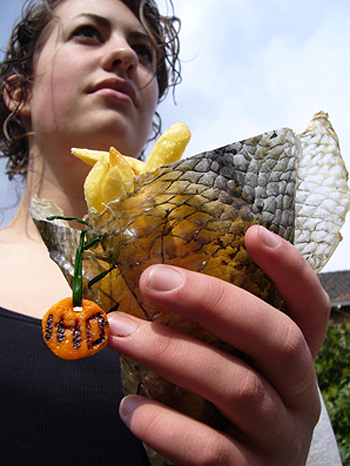
Fish and chips: image of street food packaging concept ‘IHO’, ¬© Pa√Įvi Kovanen, Eva Arts and Caroline van Teeffelen 2006, used courtesy of the designers. Please respect student work, contact culiblog for updates.
(This is the second in a series of entries about the Street Food Workshop developed and conducted together with Katja Gruitjers for our students from the Design Academy Eindhoven and the HAS den Bosch.)
Just the simple fact of making street food creates tonnes of food waste. Students Pa√Įvi Kovanen, Eva Arts and Caroline van Teeffelen used food waste materials to develop packaging for street food. Katja and I were really impressed with their packaging concept IHO, which means skin in Finnish. Even mo’ bettah, when you turn the letters around to spell OHI, you get the Finnish word for leftovers.
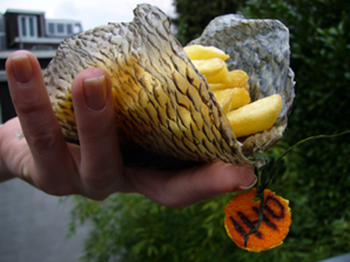
Image of street food packaging concept ‘IHO’, ¬© Pa√Įvi Kovanen, Eva Arts and Caroline van Teeffelen 2006, used courtesy of the designers. Please respect student work, contact culiblog for updates.
The fish and chips sack is brilliant. Hand-sown dried fish skin imparts a nice fish aroma to the chips and you know how the Northern peoples love their (dried) fish. Katja and I are imagining a dusting of vinegar powder on the inside of the sack for a perfect flavour.
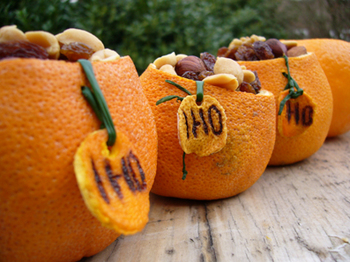
Image of street food packaging concept ‘IHO’, ¬© Pa√Įvi Kovanen, Eva Arts and Caroline van Teeffelen 2006, used courtesy of the designers. Please respect student work, contact culiblog for updates.
Urban juice bars produce orange rind and pulp waste that is normally turned into silage to feed animals that us omnivores love to eat. Kovanen, Arts and van Teeffelen assured us that there’s plenty of rind and pulp to go around and they dried the rinds into snack containers. The pulp they turned most amazingly into a palm plate that has a wonderful hand feel to it.
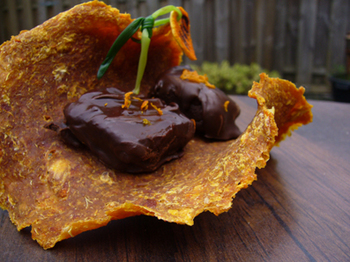
Image of street food packaging concept ‘IHO’, ¬© Pa√Įvi Kovanen, Eva Arts and Caroline van Teeffelen 2006, used courtesy of the designers. Please respect student work, contact culiblog for updates.
As if this weren’t enough for one half-term street food assignment, the ladies Kovanen, Arts and van Teeffelen developed a new ceramic material produced from eggshells and potato starch and that can be formed into any possible shape. Here, the material has been formed into a palm plate.
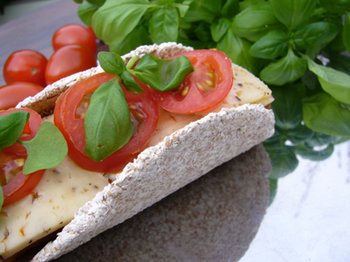
Fish and chips: image of street food packaging concept ‘IHO’, ¬© Pa√Įvi Kovanen, Eva Arts and Caroline van Teeffelen 2006, used courtesy of the designers. Please respect student work, contact culiblog for updates.
IHO street food packaging concept by Kovanen, Arts and van Teeffelen.
debra at 11:06 | | post to del.icio.us

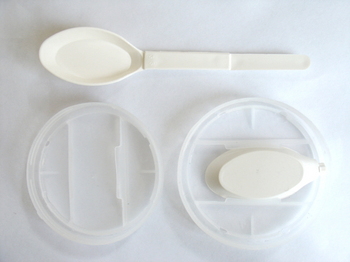
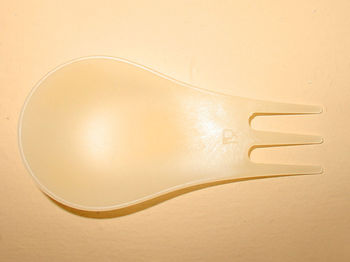
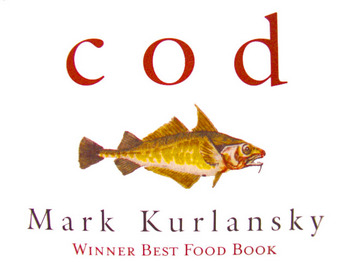
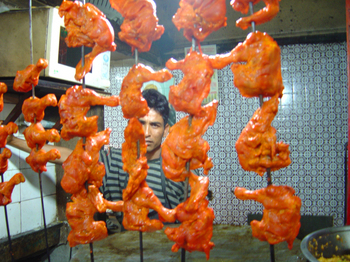
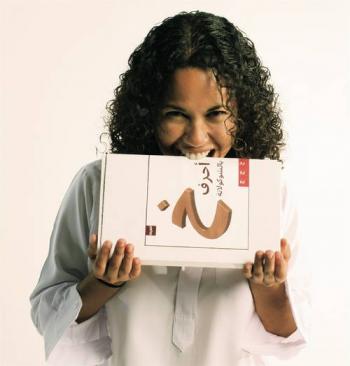
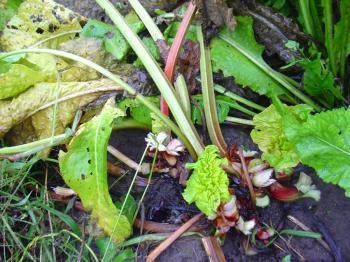
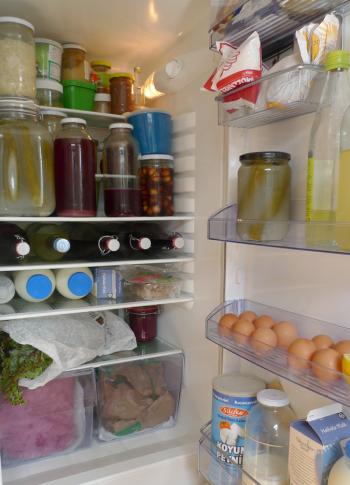










I love it, I really do love it‚Ķthe concept, the images, the attention to detail and ingredients. I feel self-indulgent just thinking about it. I want to touch it and eat it and feel it…but what now? Does this research get lost in the museum archives, a beautiful testament of the “social” and “public” art movements? What now is the next step? Will it integrate itself into the market economy? Go into production? Replace the paper and plastic shells that accompany most of the world’s food? Or is this some one else’s job? Is the artist the inspiration, free from the restrictions of limitations of economy?
I only rant so much because, since moving to Istanbul, I have been re-confronted with the gap between Western fascination with third-world ‚Äúdaily life‚ÄĚ and the practical realities that these vendors face day after day. I wonder how a simit seller could ever be convinced to use anything other than the thin paper sleeves that hold his bread. Why should he change? His system works and it is the cheapest and most understandable. Would people walking down the street pay more to eat a simit from a biodegradable certified organic container with a fancy tag? No. Would I? Yeah probably, but I get into that sort of thing, especially if some one calls it an art project. This is a good reminder, however, to put the ‚Äúappreciation of the vernacular‚ÄĚ into the proper perspective.
Everything happens, with or without you.
Comment by Julie Upmeyer — May 1, 2006 @ 13:58
Well, we’re encouraging the ladies to continue with this project. I don’t think there is a ‘developing’ country component to this project, whatever that means and we were focussing on Northern European conditions. In this context this product is completely feasible as it was developed with this context in mind.
I don’t really see the problem for diverse markets any old where, with diverse products. Street food vendors in Delhi use a huge range of repurposed paper. I’ve never seen any packaging in Europe like that except those paper rubbish bins made from repurposed billboard posters.
With regard to Northern Europe, there are no ‘little guys on the street - or next to none. In the NL, for example, there’s ONE company, Servex, that determines New York Pizza and Albert Heijn To Go and… Little guys in the street in istanbul aren’t really a part of the problem. I do think that the Dutch ‘Kiosk’ is.
This design project was about students developing ideas for their chosen context. The two projects that I’ve shown so far on culiblog weren’t even food prouducts but a jewelry collection and a food packaging concept. Of the 11 student projects, only three related to Northern European vernacular design and unfortunately these weren’t the better projects. Pity. One of these was a simple cuisine vegetal stand, another was a fancy soup stand, but in the early stages of the project it was really like a ’soup line’, and at that point it was cool - but the project de-railed trying to be boutique, and the another project was a shabu-shabu soup stand, semi-vernacular, but the group couldn’t arrive at any uniformity in their presentation, so that it was all a bunch of loose stuff.
I don’t have a problem with projects being projects and students working on things that will never be. For someone who teaches at an industrial design institute, I really wouldn’t mind if less stuff were produced. Less is less and that’s allright with me.
But I would totally go out of my way to buy frites once a year if they were packaged in IHO fish leather. I would collect the punt sackjes and put them in my food packaging collection.
Comment by Debra — May 2, 2006 @ 11:34
I think the French Fries wrappings are absolutely beautiful. Fish would go splendidly in the same material. Do continue and, indeed, LET’S MAKE THINGS BEAUTIFUL!
Comment by dick — May 4, 2006 @ 16:24